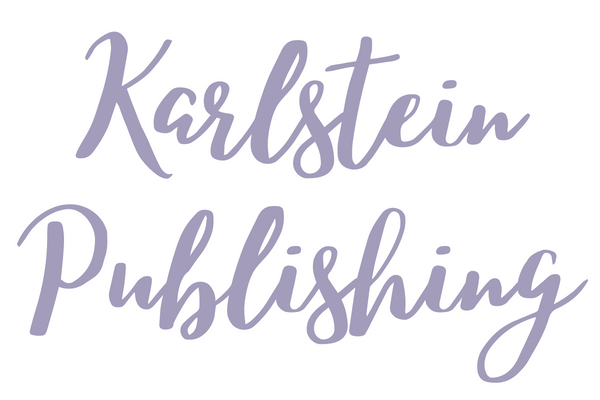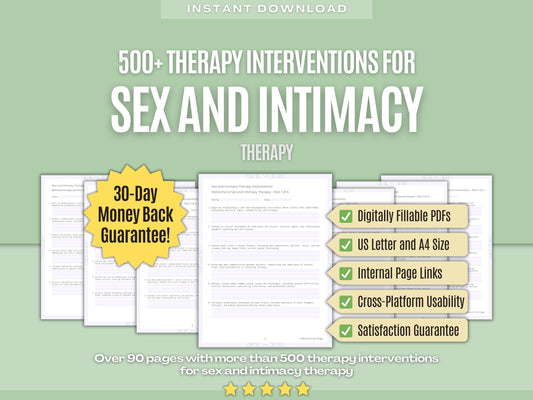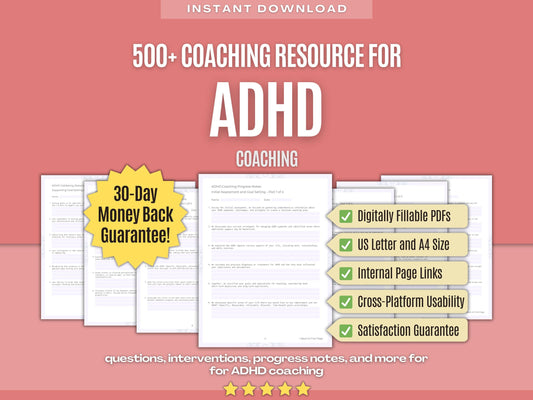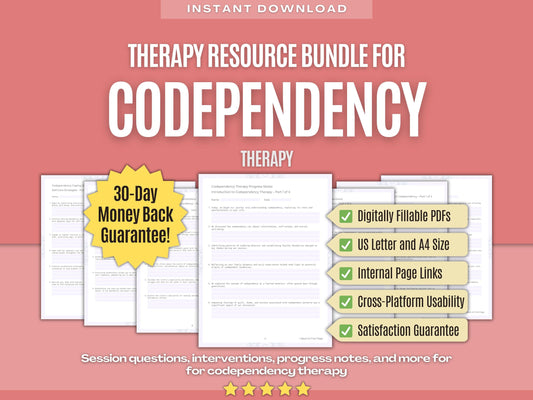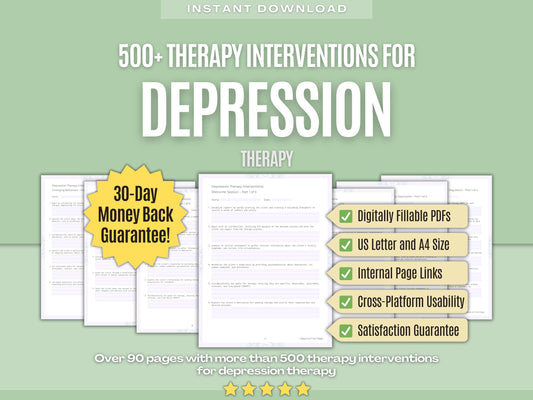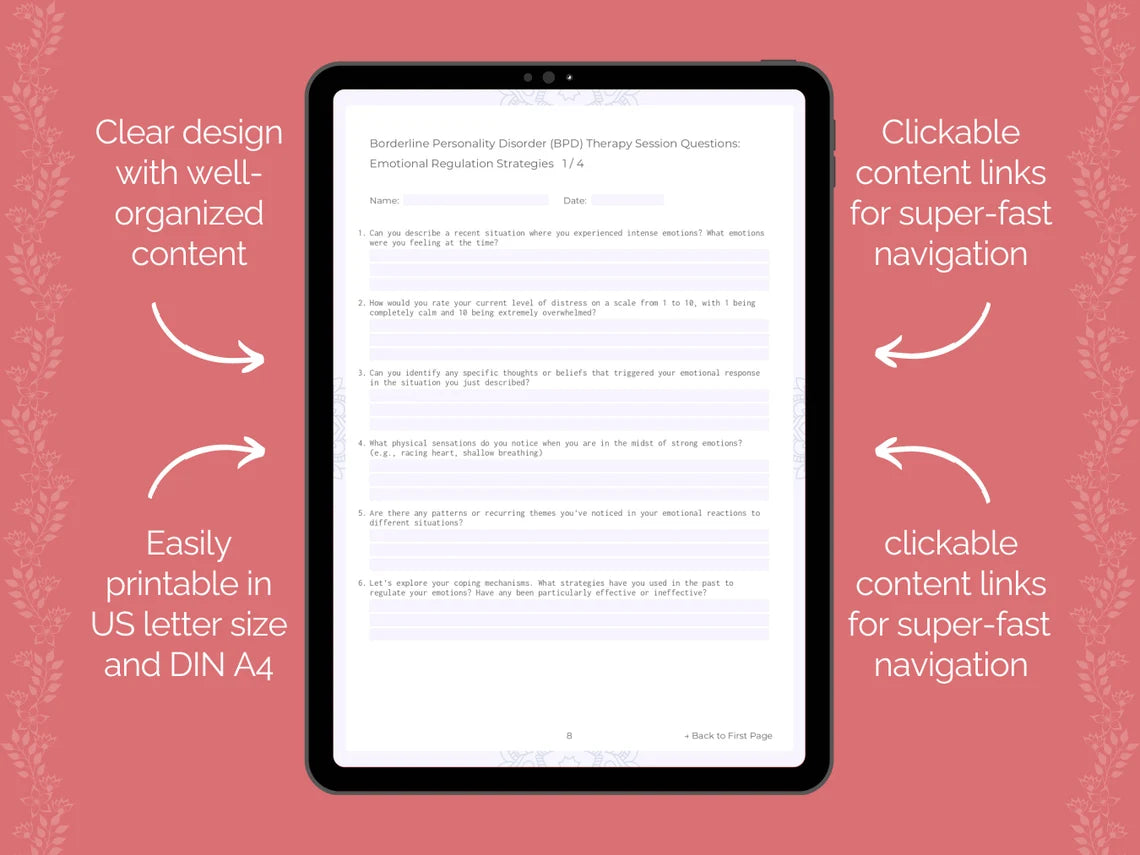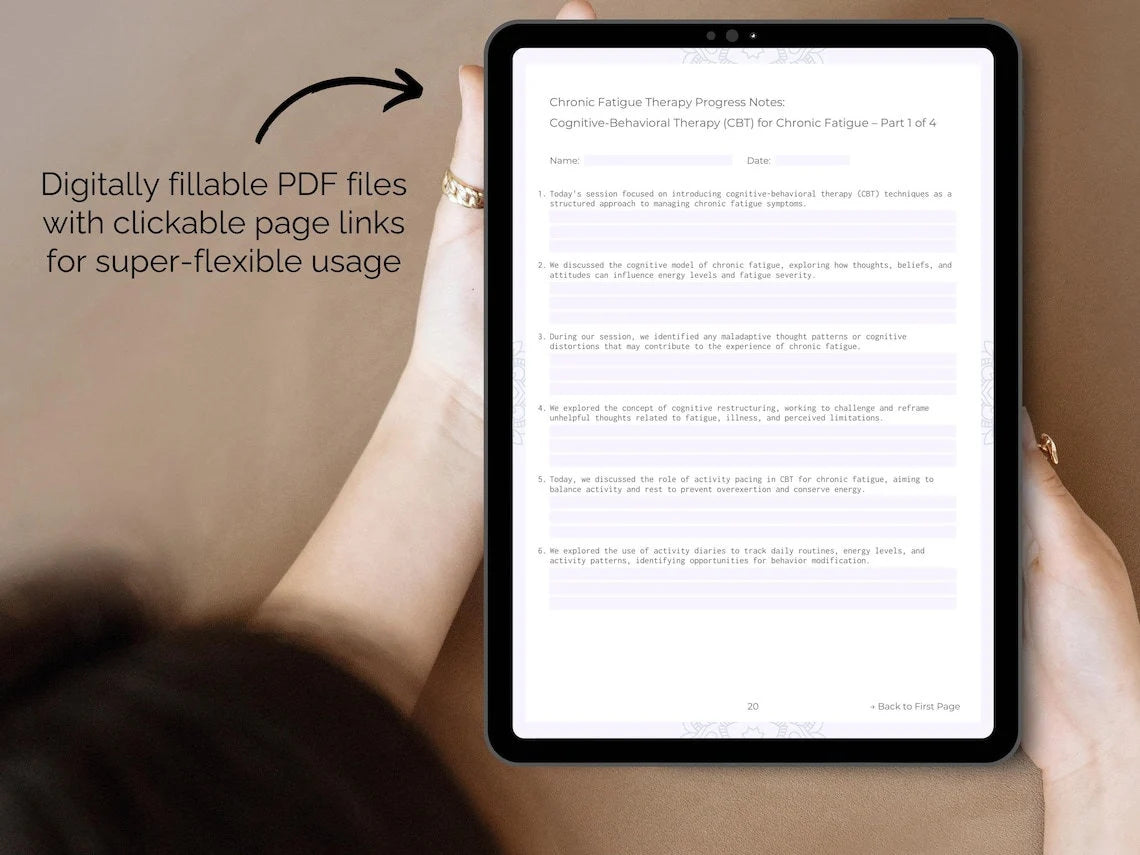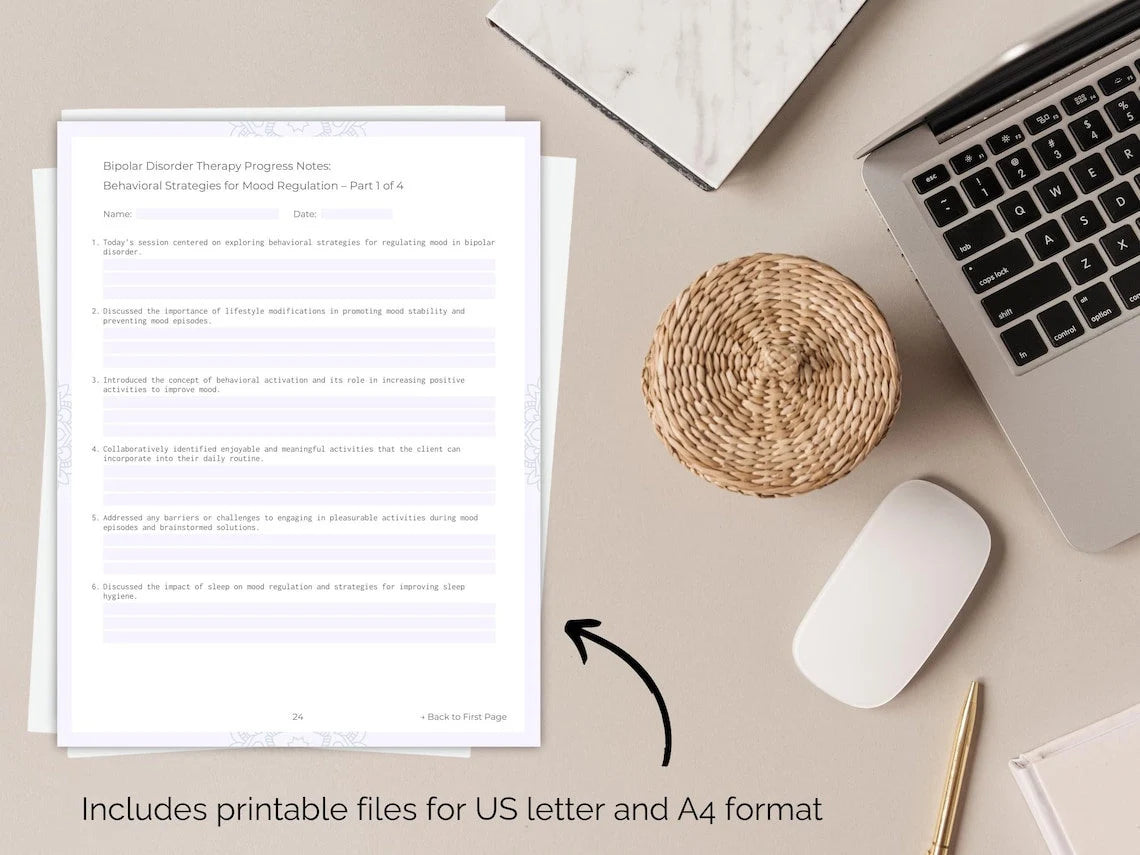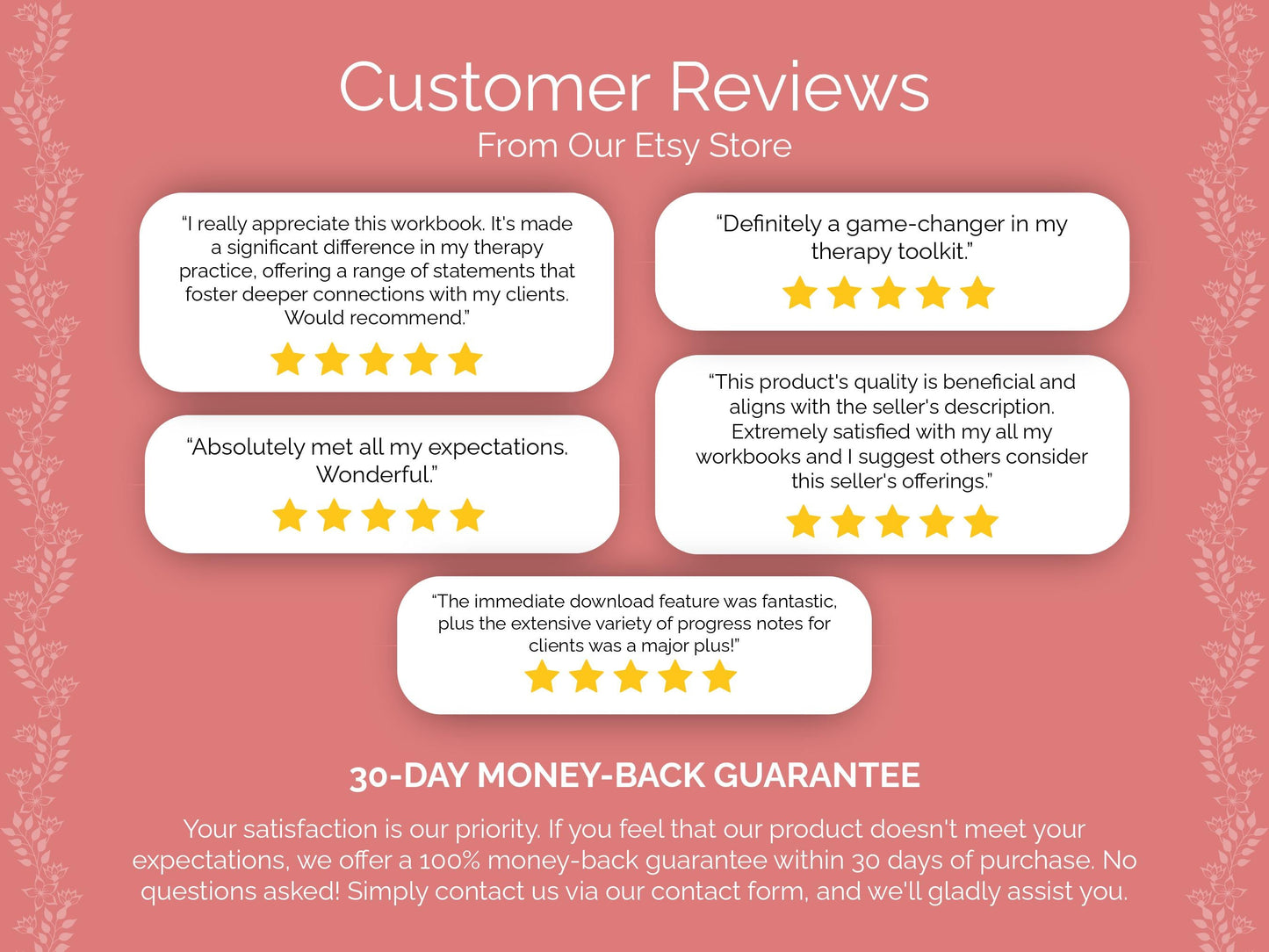Elevate Your Therapy and Guide Your Clients to Inner Healing with Our Women Therapy Interventions! ✨
1. Beginning Women's Therapy
- Establish a warm and inviting atmosphere to help women feel safe and comfortable in sharing their experiences and emotions.
- Collaboratively develop a treatment plan with the woman, outlining the focus areas and interventions to be used throughout therapy.
- Normalize the range of emotions and experiences that women may bring to therapy, validating their feelings and concerns.
- Explore the woman's social and cultural context, including family dynamics, societal expectations, and cultural influences.
- Encourage the woman to identify her strengths, values, and areas of resilience, fostering a sense of empowerment and agency.
- Explore the woman's goals and aspirations, helping her clarify what she hopes to achieve through therapy.
- Explore the woman's self-care practices and lifestyle factors, discussing strategies for promoting overall well-being.
- Validate the woman's experiences of trauma or adversity, creating a space for processing and healing within a trauma-informed framework.
- Explore the woman's relationships and communication patterns, identifying areas for growth and skill-building in interpersonal dynamics.
- Provide psychoeducation on boundaries, assertiveness, and effective communication strategies to empower women in their relationships.
- Introduce techniques for emotion regulation and distress tolerance, helping women build resilience in the face of challenges.
Need more? Find all 500+ Therapy Interventions for Women Therapy in our Digital Workbook!
2. Women's Psychoeducation
- Begin by providing an overview of the psychoeducational content, emphasizing the importance of knowledge and understanding in the therapeutic process.
- Offer information on common mental health concerns that disproportionately affect women, such as depression, anxiety, and eating disorders.
- Provide information on the symptoms and diagnostic criteria for mental health disorders, helping women recognize when professional help may be beneficial.
- Discuss the impact of societal expectations, gender roles, and cultural norms on women's mental health and well-being.
- Provide information on reproductive health issues, including contraception, fertility, pregnancy, childbirth, and postpartum adjustment.
- Offer psychoeducation on the role of social support and relationships in women's mental health, including friendships, romantic partnerships, and family dynamics.
- Provide information on coping strategies for managing stress, anxiety, and other common emotional experiences, including relaxation techniques and self-care practices.
- Offer psychoeducation on the benefits of therapy and other mental health interventions, addressing common misconceptions and stigma.
- Provide information on accessing mental health resources and support services, including hotlines, support groups, and community organizations.
- Offer psychoeducation on boundaries, assertiveness, and communication skills, empowering women to advocate for their needs and preferences in relationships.
- Discuss the potential impact of work, career, and financial stressors on women's mental health, offering strategies for managing these challenges.
Need more? Find all 500+ Therapy Interventions for Women Therapy in our Digital Workbook!
3. Mindfulness-Based Strategies for Women
- Begin by introducing the concept of mindfulness and its relevance to women's mental health and well-being, emphasizing present-moment awareness and non-judgmental acceptance.
- Incorporate mindfulness-based stress reduction (MBSR) techniques, including meditation and mindful movement practices like yoga or tai chi, to help women manage stress and anxiety.
- Discuss the benefits of mindfulness for emotional regulation, helping women recognize and respond to difficult emotions with greater clarity and compassion.
- Introduce loving-kindness meditation as a way to cultivate compassion and empathy towards oneself and others, fostering a sense of connection and well-being.
- Offer guided imagery exercises to help women create inner resources for coping with stress and adversity, such as a safe haven or a nurturing inner guide.
- Introduce mindfulness-based cognitive therapy (MBCT) techniques for working with repetitive negative thinking patterns, helping women develop greater resilience and self-awareness.
- Explore the relationship between mindfulness and sleep hygiene, offering practices for promoting relaxation and restful sleep.
- Offer mindfulness exercises for cultivating gratitude and appreciation, fostering a sense of abundance and well-being in daily life.
- Introduce mindfulness-based interventions for body image and self-esteem issues, helping women cultivate acceptance and appreciation for their bodies.
- Discuss the potential benefits of mindfulness for women navigating life transitions, such as motherhood, career changes, or relationship shifts.
- Explore the impact of mindfulness on mood regulation, offering practices for increasing emotional balance and stability.
Need more? Find all 500+ Therapy Interventions for Women Therapy in our Digital Workbook!
4. Dialectical Behavior Therapy (DBT) for Women
- Introduce the core concepts of Dialectical Behavior Therapy (DBT), emphasizing its focus on acceptance, change, dialectics, and mindfulness.
- Teach mindfulness skills to help women cultivate present-moment awareness and non-judgmental acceptance of their thoughts, emotions, and bodily sensations.
- Offer emotion regulation skills training to help women identify and label their emotions, understand their function, and develop healthy ways of coping with them.
- Teach interpersonal effectiveness skills for navigating difficult conversations, making requests, and saying no while maintaining self-respect and relationship harmony.
- Discuss the role of validation in DBT, offering techniques for validating women's experiences and emotions, both in therapy and in their daily lives.
- Introduce distress tolerance skills for managing crises, such as self-soothing, distraction, and radical acceptance, to help women navigate difficult situations without making impulsive decisions.
- Teach interpersonal effectiveness skills for building and maintaining healthy boundaries, expressing needs and preferences, and negotiating conflicts in relationships.
- Discuss the role of self-compassion in DBT, helping women cultivate kindness and acceptance towards themselves, even in the face of perceived failures or setbacks.
- Introduce problem-solving techniques for identifying obstacles and finding practical solutions to life's challenges, helping women build a sense of mastery and competence.
- Discuss the importance of radical acceptance in DBT, helping women let go of judgment and resistance towards painful experiences, thoughts, and emotions.
- Introduce self-soothing techniques, such as sensory grounding and relaxation exercises, to help women regulate their emotions and manage distress.
Need more? Find all 500+ Therapy Interventions for Women Therapy in our Digital Workbook!
5. Interpersonal Therapy (IPT) for Women
- Begin by introducing the principles and goals of Interpersonal Therapy (IPT), emphasizing its focus on identifying and addressing interpersonal issues that contribute to women's distress.
- Collaboratively identify the woman's interpersonal problem areas, such as grief and loss, role transitions, interpersonal disputes, or social isolation.
- Explore the woman's attachment history and relationship patterns, helping her recognize how past experiences may influence her current interpersonal functioning.
- Introduce communication skills training to help women improve assertiveness, active listening, and conflict resolution skills in their relationships.
- Explore the role of role transitions, such as becoming a parent, starting a new job, or ending a relationship, in triggering emotional distress and interpersonal challenges.
- Discuss the impact of interpersonal disputes and conflicts on women's well-being, offering strategies for resolving conflicts constructively and restoring harmony in relationships.
- Explore the impact of social isolation and loneliness on women's mental health, offering strategies for building social support networks and fostering community connections.
- Introduce the concept of role play in therapy, using it as a tool for exploring interpersonal dynamics and practicing new ways of relating to others.
- Discuss the role of family dynamics in shaping women's interpersonal patterns, offering strategies for navigating family conflicts and boundaries.
- Explore the impact of social comparison and self-esteem on women's interpersonal relationships, offering strategies for building self-confidence and self-worth.
- Introduce the use of genograms or relationship maps to help women visualize and understand the patterns of relationships and interactions in their lives.
Need more? Find all 500+ Therapy Interventions for Women Therapy in our Digital Workbook!
6. Emotion-Focused Therapy (EFT) for Women
- Begin by introducing the core principles of Emotion-Focused Therapy (EFT), emphasizing its focus on understanding and transforming emotions to promote healing and growth.
- Invite women to identify and describe their emotions, helping them develop greater awareness and acceptance of their inner experiences.
- Practice emotion coaching techniques, such as empathetic listening and validation, to help women feel heard, understood, and supported in their emotional experiences.
- Explore the connection between past experiences and current emotional patterns, helping women identify and process unresolved emotions from their personal history.
- Introduce the concept of emotion schemas, helping women recognize and challenge underlying beliefs and assumptions that shape their emotional experiences.
- Discuss the impact of emotional avoidance and suppression on women's mental health, offering strategies for approaching and processing difficult emotions with compassion and courage.
- Explore the impact of shame and self-criticism on women's emotional well-being, offering techniques for cultivating self-compassion and acceptance.
- Introduce emotion-focused interventions for healing trauma and attachment wounds, such as chair work or two-chair dialogue, to help women process and integrate difficult emotions.
- Offer emotion-focused interpersonal interventions to help women navigate relationship conflicts and deepen emotional connections with others.
- Introduce the use of emotion-focused self-reflection exercises, such as journaling or guided self-inquiry, to help women deepen their emotional awareness and insight.
- Offer emotion-focused interventions for managing anxiety and depression, helping women develop adaptive ways of coping with distressing emotions.
Need more? Find all 500+ Therapy Interventions for Women Therapy in our Digital Workbook!
7. Psychodynamic Therapy for Women
- Begin by establishing a therapeutic relationship characterized by empathy, trust, and confidentiality, providing a safe space for women to explore their thoughts and feelings.
- Invite women to explore their early childhood experiences and family dynamics, recognizing the impact of early attachments and relationships on their current psychological functioning.
- Explore women's relational patterns and attachment styles, helping them recognize recurring themes and dynamics in their relationships with others.
- Offer interpretation and insight into unconscious conflicts and defenses, helping women gain awareness and understanding of underlying psychological processes.
- Introduce the use of dream analysis to explore unconscious themes, symbols, and conflicts, helping women gain insight into their inner world.
- Discuss the role of repetition compulsion in women's lives, helping them recognize and break free from destructive patterns of behavior and relationships.
- Explore the impact of early trauma and adversity on women's psychological development, recognizing the role of unresolved trauma in current symptoms and difficulties.
- Discuss the significance of object relations and internalized representations of others, helping women recognize and explore their relational patterns and attachment dynamics.
- Explore women's fantasies and creative expressions, recognizing their symbolic significance as reflections of unconscious desires and conflicts.
- Discuss the concept of psychic determinism, helping women recognize the influence of unconscious motives and impulses on their thoughts, feelings, and behaviors.
- Offer interpretation and insight into women's resistance to therapy, helping them explore underlying fears and anxieties about self-disclosure and vulnerability.
Need more? Find all 500+ Therapy Interventions for Women Therapy in our Digital Workbook!
8. Music Therapy for Women's Emotional Well-being
- Begin by introducing the concept of music therapy as a therapeutic modality for promoting emotional well-being and self-expression among women.
- Offer a variety of musical instruments and genres for women to choose from, allowing them to select music that resonates with their emotions and experiences.
- Explore women's musical preferences and associations, recognizing the personal significance of specific songs or genres in their lives.
- Offer techniques for improvisation and musical exploration, allowing women to express themselves spontaneously through instrumental or vocal music.
- Discuss the impact of rhythm and tempo on emotional regulation, offering drumming or rhythmic exercises to help women regulate and release emotional tension.
- Offer techniques for creating personalized playlists, allowing women to curate music that supports their emotional needs and goals.
- Introduce the use of lyric analysis as a tool for exploring and processing emotions, inviting women to reflect on the lyrics of songs that resonate with their experiences.
- Offer techniques for guided listening and mindfulness with music, helping women cultivate present-moment awareness and inner calm.
- Explore the connection between music and memory, inviting women to share stories and memories associated with specific songs or musical experiences.
- Discuss the therapeutic benefits of group music-making, such as fostering a sense of community, promoting emotional expression, and enhancing interpersonal connections.
- Explore women's experiences of empowerment and resilience through music, inviting them to identify songs or musical experiences that inspire strength and courage.
Need more? Find all 500+ Therapy Interventions for Women Therapy in our Digital Workbook!
9. Concluding Therapy Session for Women
- Reflect on the progress and growth women have experienced throughout their therapy journey, acknowledging their efforts and accomplishments.
- Review the goals and objectives that were established at the beginning of therapy, discussing the progress made towards achieving these goals and celebrating any milestones reached.
- Offer closure and resolution for any unfinished business or unresolved conflicts within the therapeutic relationship, ensuring that women feel heard, validated, and respected.
- Validate any mixed emotions or ambivalence women may be experiencing about ending therapy, acknowledging the bittersweet nature of saying goodbye to a supportive therapeutic relationship.
- Discuss strategies for maintaining progress and coping with challenges outside of therapy, providing women with tools and techniques to support their ongoing growth and well-being.
- Offer guidance on how to recognize signs of relapse or regression and how to access additional support if needed in the future.
- Explore women's reflections on their therapy experience, inviting feedback and insights that can inform future therapeutic work and enhance the quality of care provided.
- Provide referrals or recommendations for ongoing support or follow-up care, such as support groups, peer counseling, or additional therapy options.
- Validate any feelings of loss or grief women may be experiencing about ending therapy, acknowledging the significance of the therapeutic relationship and the bond that has been formed.
- Discuss the importance of setting boundaries and assertively advocating for their needs in relationships and other areas of life, empowering women to maintain healthy boundaries and prioritize their well-being.
- Offer words of encouragement and support, expressing confidence in women's ability to navigate life's challenges and create meaningful and fulfilling lives for themselves.
Need more? Find all 500+ Therapy Interventions for Women Therapy in our Digital Workbook!
10. Reflection and Closure in Women's Therapy
- Begin by inviting women to reflect on their therapy journey, encouraging them to explore their thoughts, feelings, and insights about the therapeutic process.
- Encourage women to review the goals they set at the beginning of therapy and assess the progress they have made towards achieving these goals.
- Validate women's emotions and experiences, affirming the significance of their therapeutic work and the courage it takes to engage in the process of self-discovery and healing.
- Reflect on the strengths and resources women have developed during their therapy journey, recognizing their resilience, creativity, and capacity for growth.
- Explore women's hopes and aspirations for the future, helping them identify their values, goals, and dreams as they move forward on their journey of self-discovery and personal growth.
- Validate any mixed emotions or ambivalence women may be experiencing about ending therapy, acknowledging the bittersweet nature of saying goodbye to a supportive therapeutic relationship.
- Explore women's support networks and resources, helping them identify sources of support and encouragement in their lives as they transition out of therapy.
- Offer closure rituals or activities to mark the end of therapy and honor women's journey of growth and healing, such as writing a letter of gratitude or creating a symbolic object.
- Discuss the concept of endings and new beginnings, helping women recognize the opportunities for growth and transformation that come with closure and transition.
- Offer reassurance that the therapeutic work done during therapy will continue to have a lasting impact on women's lives, even after therapy has concluded.
- Explore women's hopes and aspirations for the future, helping them identify their values, goals, and dreams as they move forward on their journey of self-discovery and personal growth.
We hope that our therapy interventions for Women therapy will help you to elevate your therapy practice and guide your clients to inner healing! Do you need more therapy interventions for Women therapy? Find them all in our Digital Workbook! Or do you have any questions or suggestions for us? Please feel free to contact us at any time!
